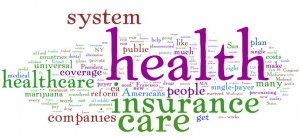Over the next three years, as part of the ongoing healthcare reform initiative the Affordable Care Act (ACA) will be rolled out. As this Let’s discuss the most common Affordable Care Act obstacles hospitals are encountering.
Communication Obstacles Surrounding The Affordable Care Act

unfolds, America’s state and local officials will then be charged with responsibility of reaching out to more than 30 million individuals in order to enroll them in publicly funded or subsidized health plans. These plans will be offered through state insurance exchanges.
Unfortunately, the majority of those individuals have very little knowledge of health coverage and will have difficulty finding, understanding, and using the insurance information that is necessary to getting properly enrolled.
Failure To Meet Enrollment Goals
Failure to meet the enrollment goals, however, will undermine the success of the new health law, and, more importantly, will not increase health insurance coverage. Steps need to be taken to clear up the language and procedures surrounding the enrollment process. Otherwise individuals will more than likely not enroll. A roadblock which will amount to a significant waste of time, energy, and taxpayer dollars.
Properly enrolling in a health insurance plan, particularly a government funded or subsidized plan (such as Medicare or Medicaid), is a complicated undertaking. Individuals must find their way through a maze filled with eligibility guidelines, forms to complete, and lists of mandatory citizenship and financial documentation required for enrollment. Needless to say, if the information is not clear and usable, people will get lost and stalemated.
Additionally, they need to understand concepts such as premiums, co-pays, and benefits, and then apply this comprehension to their existing health situation so that they can choose the most appropriate plan. In short, they must figure out which services are covered and which are not, and complete additional paperwork to enroll in a plan they select.
My head’s spinning just thinking about it. And research proves an even larger issue: Fourteen percent of US adults have trouble finding the date of a physician’s visit on an appointment slip. According to the National Assessment of Adult Literacy, only 12 percent can successfully compute their contribution toward health insurance costs, even when a table is included to facilitate the analysis.
Clear communication is the only hope for the success of the Affordable Care Act to enroll those newly eligible in an appropriate insurance plan. We cannot rely upon a website and assistance from insurance exchange counselors alone. These insurance counselors themselves have to be fully articulate in the language and literacy barriers facing many of those individuals now able to obtain coverage. Even now, state Medicaid programs do not successfully enroll all eligible populations. 88 percent state enrollment is considered highly successful, while the least successful states enroll just 44 percent of those who qualify for services.
The Affordable Care Act does require health plans that are seeking certification in state exchanges to provide information in plain language. This means, according to the ACA, using “language that the intended audience, including individuals with limited English proficiency, can readily understand and use because that language is concise, well-organized, and follows other best practices.”
But is this a reality? One obvious obstacle is the up-front expense of creating insurance information and enrollment processes that use clear, accessible language. However, not making the enrollment process understandable to people of all literacy levels will be even more costly.
A system that is difficult to figure out equals delays in enrollment or failure to enroll at all in any health plan, particularly individuals who are healthy and feel less pressure to have insurance coverage. If these individuals remain un-enrolled, the majority of the individuals participating in the exchange market will be sicker (or higher risk), resulting in higher costs for health care overall.
Moving Forward Alongside The ACA
Proactive measures need to be taken to support individuals through the enrollment process. Assistance with completing the application can be provided by community-based organizations and health providers as well as by the exchange counselors. Low health literacy has to be considered a factor in healthcare reform and actions to eradicate it have to be in place for the Affordable Care Act not to fall short of expectations.
